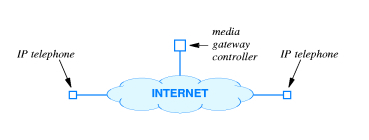When we talk about Security in computer networks today, we make a big reference to Internet, as it is in this global network where attacks on our computers occur with the greatest frequency.
But before we develop the theme, we have to answer ourselves: what is “security”?
Basically, we say a house is safe when its vulnerabilities have been minimized. But... and vulnerability? According to ISO (International Standardization Organization), in the context of computing, is any weakness that can be exploited to breach a system or the information it contains.
Thus, we have several possible security breaches in a system, that is, we have several threats, among which we highlight:
– Information destruction
– Modification or misrepresentation of information
– Theft, removal or loss of information / resources
– Interruption of services
By definition, we also have the attack, which is the effective carrying out of a threat intentionally. As examples of computer attacks, we have:
– Impersonation (masquerade)
– DDos
– Replay
– Modification
- Social engineering
– Refusal or impediment to service
Due to this environment of insecurity where data is inserted and flows in computer systems and networks, many companies adopt security policies, which are sets of rules, laws and management practices aimed at protection. They can be implemented using various mechanisms, such as:
- Cryptography
- Digital signature
- Authentication
- Access control
– Security labels
– Detection, recording and reporting of events
– Traffic filling
– Routing control
Thus, as the security mechanisms in the network as a whole are not enough, we have also established security measures in communications, such as in electronic mail. This (e-Mail) uses several mechanisms so that our data reaches its destination as safe as possible. It makes use of protocols such as SMTP (Simple Mail Transfer Protocol) which is considered weak, S/MIME (Secure Multipurpose Internet Mail Extensions) and PGP (Pretty Good Privacy) which is intended for email encryption personal.
What is very much in use are Firewall's, devices that act as a protection barrier against invaders. They exist as either software or hardware, or a combination of both.
As an example of good free home firewalls, we can cite:
Do not stop now... There's more after the advertising ;)
– Comodo Firewall
– Zone Alarm
– Sygate Personal Firewall
Sources:
- Computer network
Andrew S. Tanenbaum
4th edition, 2003.
– Computer Networks and the Internet: A Top-Down Approach
James F. Kurose, Keith W. Ross
3rd edition, 2006.
– Computer Networks, from LANs, MANs and WANs to ATM Networks
Luiz Fernando Soares, Guido Lemos, Sérgio Colcher
2nd edition, 1995.
– Networks Security, The complete reference
Osborne, McGraw-Hill, 2004.
Wendley Souza
Prof. computer engineering
Federal University of Ceará - UFC
Informatics Columnist - Brasil Escola
Computing - Brazil School
Would you like to reference this text in a school or academic work? Look:
PERCILIA, Eliene. "Security in Computer Networks"; Brazil School. Available in: https://brasilescola.uol.com.br/informatica/seguranca-redes.htm. Accessed on June 28, 2021.

